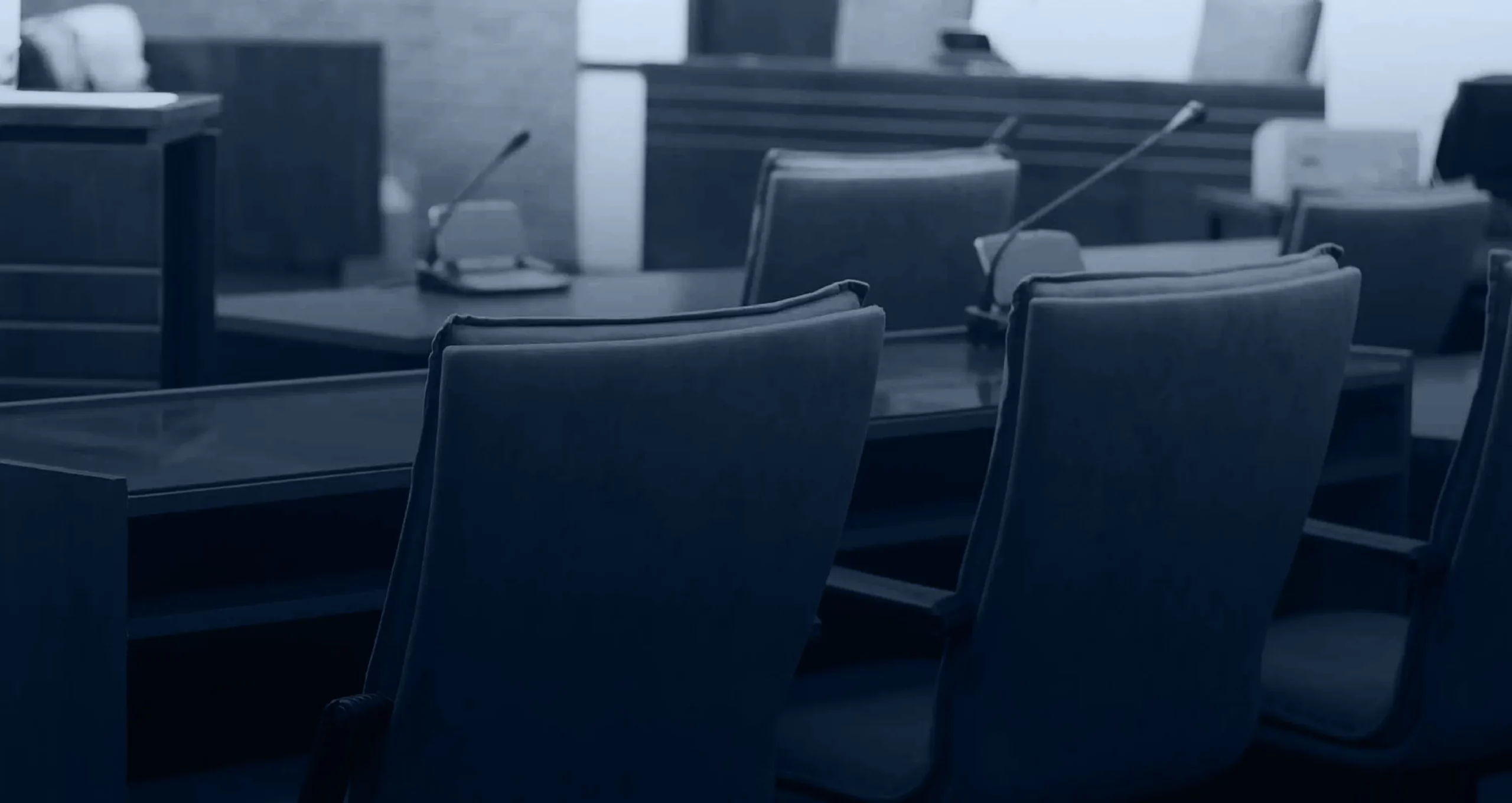Like most large cities, Chicago offers many healthcare options for clients, with several hospitals to choose from and renowned specialists in many medical practice areas. However, even the best hospitals and the most well-known physicians can make errors due to carelessness or recklessness. When those bile duct errors result in injury, they can lead to a medical malpractice claim.
Surgical removal of the gallbladder—known as cholecystectomy—is one of the most common surgical procedures performed in the U.S., with the procedure performed more than 1.2 million times yearly.
One of the most common complications of the surgery involves injury to the bile duct during the procedure, which can result in bile leaking into the abdomen or disrupting the normal flow of bile from the liver. If medical staff fail to realize an injury occurred during the surgery, the injury can result in infection or even death.
If you have suffered a bile duct injury as a result of a healthcare provider’s carelessness or recklessness during your gallbladder surgery, an experienced bile duct injury attorney from Zayed Law Offices Personal Injury Attorneys can explain the medical malpractice process that you can use to seek compensation for the financial and psychological impacts of your injury, and also help you understand the types of services our team can provide to assist you with your claim.
Chicago, IL Bile Duct Injury Guide
How Bile Duct Injuries Occur

The gallbladder is a small, sac-like organ located beneath the liver on the right side of the abdomen. This organ stores bile produced and released by the liver until it transports it to the small intestine, aiding in the absorption and digestion of food. Sometimes, the gallbladder develops small, hard masses known as gallstones. These stones can result in swelling, pain, and discomfort and lead to digestive system disorders.
A common treatment for this condition is the removal of the gallbladder through a procedure known as laparoscopic cholecystectomy. Surgeons perform this procedure by making just a few small cuts in the abdomen. They use these openings to insert a small camera and tool for removing the organ, all while avoiding the need to create a large surgical opening or scar.
Bile Duct Injury: Risks and Medical Errors
Unfortunately, risks of injury to the common bile duct or the hepatic duct are relatively common, generally due to anatomic differences between patients—which occur in around 15 to 20 percent of patients undergoing the procedure—that can leave the surgeon unclear as to where to clip or cut to remove the gallbladder.
Cholecystectomy can be challenging due to anatomy. Surgeons should switch to open surgery for better visualization and reduced risks.
The open cholecystectomy procedure takes longer to recover from (2-6 days) but is safer for the bile duct. Some doctors avoid it, even when they can’t see the whole duct system.
Other medical errors that can result in a bile duct injury during laparoscopic cholecystectomy include:
- Inexperience and lack of understanding of how to use the laparoscopic tool.
- Lack of binocular vision tools that provide the surgeon with an undistorted view of the organ.
- Hurrying through the surgery without properly determining if a bile duct injury has occurred.
- Failure to perform imaging tests that would better inform the surgeon of the patient’s unique anatomy.
- Failure to monitor the patient adequately after the procedure to discover signs of bile duct injury such as nausea, vomiting, abdominal pain, swelling of the abdomen, and jaundice.
- Failure of equipment used to perform the procedure.
The Physical, Psychological, and Financial Impacts of Bile Duct Injuries
Clipping, pinching, or burning the common bile duct during surgery can result in bile leaking into the abdomen. Bile is an acidic substance that can lead to inflammation and even infection when this occurs. The error can also result in the bile duct becoming blocked, preventing bile from flowing from the liver.
In 10-30% of cholecystectomy cases, surgeons detect bile duct injuries during surgery and can fix them. Often, surgeons miss these issues, leading to post-operative complications. They must then perform imaging tests to identify the problem.
An extra step might be necessary to fix the bile duct, often by using intestine as a patch for repairs.
Biliary sepsis is a life-threatening infection that can result from a bile duct injury. Studies reveal reduced quality of life in long-term survivors of this injury, persisting for years after the incident. Many patients cannot return to work and lose important work benefits due to disabilities caused by the bile duct injury.
Seeking Compensation for a Chicago, Illinois Bile Duct Injury
If you had a bile duct injury during laparoscopic cholecystectomy due to medical error, consider filing a malpractice claim.
Medical malpractice is when healthcare providers make errors causing patient injury. Not all bad outcomes are due to malpractice; medical procedures carry inherent risks, and not every error results in injury.
The Medical Malpractice Claims Process in Chicago, IL
To get compensation for bile duct injury from medical negligence, file a claim against the provider’s malpractice insurance. Doctors buy it to cover errors causing harm or death.
Many medical facilities require doctors with privileges to carry liability insurance for protection.
Medical malpractice claims are challenging due to extensive documentation and evidence needed to prove injuries resulted from medical error.
Hiring an Attorney to Assist You with the Claim
If you’ve had a bile duct injury from medical negligence, get medical care first. Then, attend a free case evaluation with a malpractice attorney. It’s a no-obligation talk about your case and legal options. Discover how the attorney and their team can assist you.
Don’t worry about the cost of hiring an attorney. Medical malpractice attorneys use contingent fees. You pay only when they win your case, ensuring no upfront legal costs. When you and the attorney decide to work together on the claim, you will sign a contingent fee agreement.
This agreement details services and payment terms. The attorney and team work for free upfront. They’ll deduct their fee from your compensation.
An Investigation of Your Surgery
One of your legal team’s first objectives is to thoroughly investigate the events that led up to your injury. This investigation helps the legal team learn more about the evidence and pinpoints who was liable for the injury. Injuries resulting from errors made by a physician generally involve a claim against the doctor’s medical malpractice policy. In contrast, the facility’s policy files injuries resulting from negligence by nurses or other hospital staff.
Establishing a Value to Your Claim
Contrary to popular belief, compensating for a bile duct injury isn’t just about medical expenses, despite what insurance companies imply.
Your injury compensation covers wage loss and future earning capacity, considering temporary and permanent impacts. Your attorney calculates non-economic damages like pain, suffering, and emotional distress.
Filing the Claim Against the At-Fault Party’s Medical Malpractice Policy
Once your attorney has properly valued your claim, they will submit the claim to the insurance provider who services the at-fault party’s medical malpractice policy. When they receive the claim, the provider will assign a claims adjuster to the case.
The claims adjuster, an insurance company worker, assesses claims, decides liability, and offers compensation to insured parties. Remember, they prioritize the company’s interests.
Settlement Negotiations
There are three potential responses that the claims adjuster can make to the claim. They can accept, deny, or offer an out-of-court settlement for less than the established value of the claim. The claims adjuster’s first offer may undervalue your claim; your attorney negotiates for a better offer. If the insurer doesn’t pay, you can sue for medical malpractice in civil court. In this way, a judge or jury can hear the case and determine liability and compensation.
Filing a Medical Malpractice Lawsuit
Filing a medical malpractice lawsuit requires you to file the claim within the statute of limitations. The statute of limitations on medical malpractice claims in Illinois is generally two years from when the injury occurred or when the claimant knew they were injured. Even if there is a late discovery of the injury, the claimant has no more than four years to file the claim unless they’re a minor who suffered an injury. Minors cannot file legal claims, so either their parents or legal guardians must file on their behalf, or they can file a claim after they reach their 18th birthday.
Failing to meet the statute of limitations in a medical malpractice claim will almost always result in losing the right to use the court process when seeking compensation for your bile duct injury. Because most insurance settlements are a way for the insurance provider to avoid the expenses and uncertainties posed by litigation, if you no longer have the ability to litigate the claim, you likely will not have the ability to garner a fair settlement from the insurance provider either. Your attorney will manage the timing of your claim to ensure that it is filed within the statutory period.
Another important aspect of the medical malpractice lawsuit process is the requirement of an affidavit of merit to be filed along with the lawsuit. An affidavit of merit is a statement that declares that your attorney consulted with a medical professional who is knowledgeable about the medical issues of the case and has experience either teaching or practicing in the medical practice area that is relevant to the case. The affidavit also declares that, from this consultation, the medical professional determined there is a reasonable cause for the lawsuit.
Litigation
While most medical malpractice lawsuits are resolved by settlement before the case goes to court, the attorney you hire must be comfortable with the court process. Your attorney will handle many pre-trial requirements. A preliminary hearing will schedule the exchange of evidence and depositions, and the insurance provider may request that you undergo an independent medical exam. They may need to file and serve motions with the court, the at-fault party, and their insurance provider, and your attorney will also respond to motions the defendant filed.
The legal team will continue to collect evidence and witness testimony that both help to prove liability and justifies the claim’s value. Finally, if the claim does not settle, the trial date will arrive, and your attorney will present your case to the court.
Receiving Your Compensation
After your claim, the compensation you receive as a result of a negotiated settlement or court award is sent directly to your attorney. The attorney will place the funds in a trust and will go to work to settle any medical liens that were placed against the award for payment to medical providers who treated your bile duct injury and health insurance providers who covered these expenses for you while your case was active. The attorney will also deduct the agreed-upon percentage of the award from the proceeds as payment for their services. After that, they will meet with you to finalize the case and turn the remainder of the proceeds to you.
Frequently Asked Questions About Bile Duct Injuries in Chicago, IL
For answers to questions you have about your specific claim, contact an attorney for a free case evaluation. Here are some commonly asked questions about bile duct injury due to medical error.
What if my attorney cannot obtain an affidavit of merit before the statute of limitations expires?
If your attorney struggles to find a medical expert due to time limits, they can file the lawsuit without the affidavit, due within 90 days. Failure to do so will generally result in the refusal of the court to hear the claim. Experienced medical malpractice attorneys have a network of healthcare providers they can turn to for consultation on such matters.
How much is the average settlement for a bile duct injury?
Settlements show injury severity, personal hardship, and cooperation for a fair agreement between claimant and at-fault party’s insurer. Because of these unique factors, there isn’t an “average” settlement.
Your attorney can provide guidance to help you understand how your claim is valued and what constitutes a fair settlement for the expenses and impacts you incurred for you to make the decisions about your case that only you can make, such as accepting a settlement offer or filing a lawsuit.
What if I can’t afford an attorney to help me with my claim? Can I file it myself?
Medical malpractice claims demand experience in legal processes, medical conditions, treatments, and compensation for bile duct injuries, making them challenging.
You require a lawyer experienced in countering adjusters’ tactics, skilled in collecting evidence and testimony, even from reluctant parties. Not hiring a medical malpractice attorney often leads to frustrated and uncompensated claimants in the complex process.
If You Suffered a Bile Duct Injury, a Chicago Medical Malpractice Lawyer Can Help

Medical professionals are required to take reasonable actions in order to avoid causing injuries to their patients. While many doctors will claim that a bile duct injury is simply a known risk of a procedure, these injuries are often the result of medical carelessness.
The legal team at Zayed Law Offices Personal Injury Attorneys has many years of experience assisting people in Chicago and throughout Illinois who have experienced injury due to medical errors. Let our medical malpractice attorneys help you make sense of the process and pursue the compensation you deserve. For your free case evaluation, contact us online or by calling (312) 726-1616.
Visit Our Personal Injury Law Office in Chicago, IL
Zayed Law Offices Personal Injury Attorneys
Address:
10 S La Salle St STE 1230
Chicago, IL 60603
Phone:
(312) 726-1616
Business Hours:
Monday: Open 24 hours
Tuesday: Open 24 hours
Wednesday: Open 24 hours
Thursday: Open 24 hours
Friday: Open 24 hours
Saturday: Open 24 hours
Sunday: Open 24 hours








